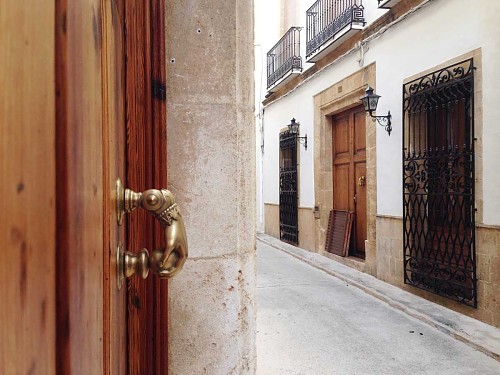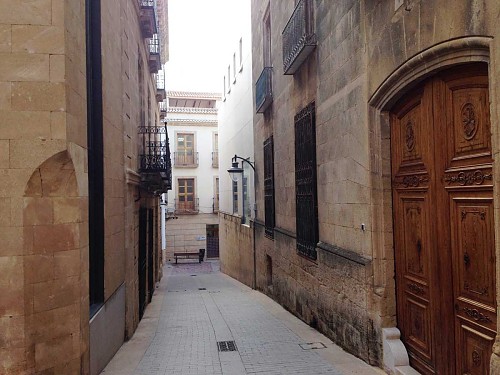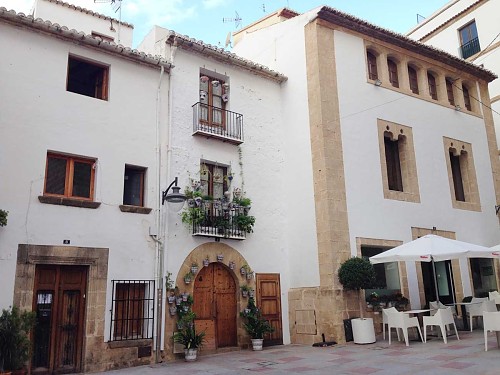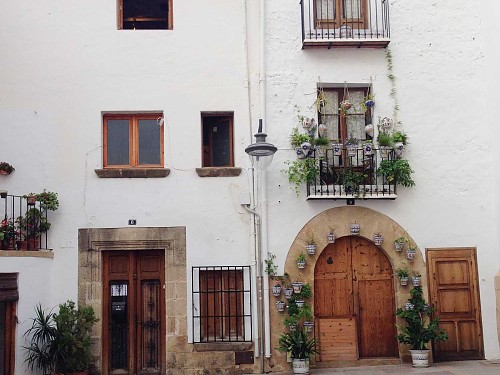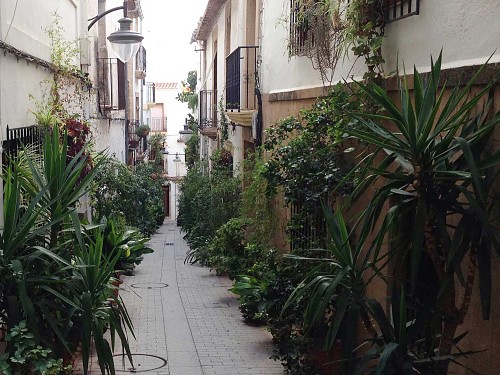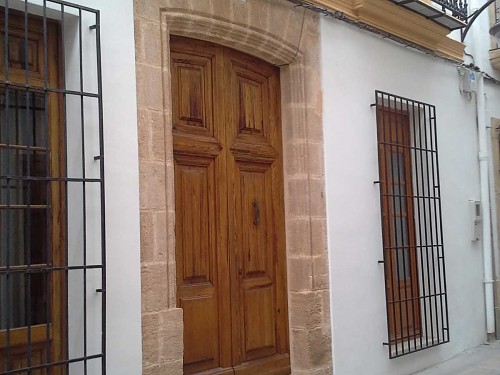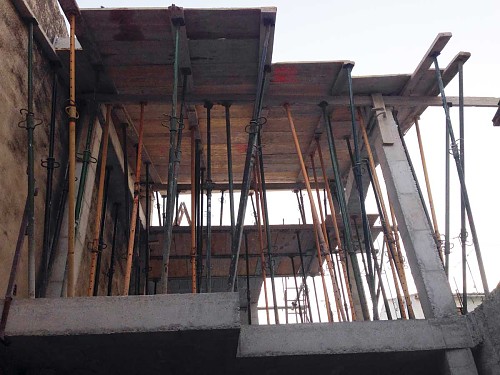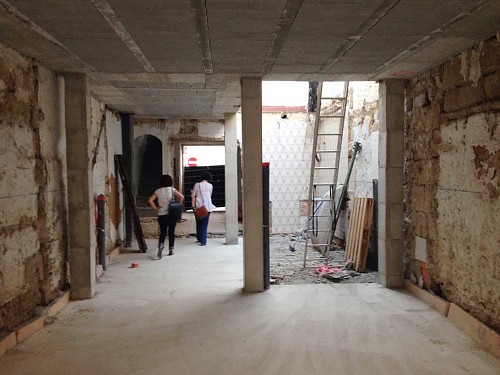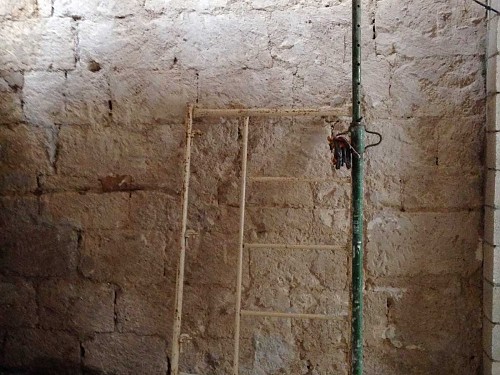Places to live in Jávea (10): the Historic Center
The same urban aesthetic for centuries. The Historic Center of Jávea is one of the best preserved on the entire Costa Blanca. Many of the houses that occupy its narrow streets have architectural elements on their facades -and their interior- that have remained unchanged over time for many centuries.
One of those differentiating elements is, without a doubt, the rough. In this post we already talked about this very special sandstone that is present in not only practically the majority of houses in the old town but also in the main monuments, such as the Church of San Bartolomé, the town hall building, the Casa Abadía or the Municipal market.
The Historic Center grew around the church-fortress, originally designed more to protect the inhabitants from attacks by Barbary pirates than for worship. From that primitive nucleus, the town grew with the limits of the defensive walls, the remains of which can be visited on Avenida Príncipes de Asturias. With the emergence of the raisin trade in the 19th century, wealthy families built large houses for themselves on that same avenue and on that of Alicante.
Those are the largest houses in the entire Historic Center. They have up to three heights and large patios. However, the houses located in the narrower streets are not usually of the same dimensions, except for those on Calle Mayor. A typical house has an entrance door and a window on the ground floor -facing the street-, a balcony or windows on the first floor -which have generally been raised over the original chamber. A space where food, tools for the field were stored... Many of the houses also have a cistern and a backyard, which at the time was occupied by the animal pen.
There is a good supply of this type of houses for sale. Some require comprehensive reform or sometimes demolition -it is the least of the cases-. Construcciones Cholbi we have carried out some reform projects. On Calle Mayor in a house that merges two houses and in which the owners have rightly maintained the traditional aesthetic. It is the house in the image with number 22.
And we are currently carrying out a work in another house in the Historic Center. In this case, only two original bays have been maintained and the other part of the house has been demolished, raising a new structure. With the new project, the house goes from 60 habitable square meters to 131. In this case, the tosca will also play an important role and will be left visible in several of the rooms.
The Historic Center of Jávea is a perfect place to buy and reform a house for those who appreciate traditional construction. It also has the advantage of being close to most of the day-to-day services: supermarkets, health center, banks, schools... In short, an option for those looking to live in a house that is part of a great story.
The same urban aesthetic for centuries. The Historic Center of Jávea is one of the best preserved on the entire Costa Blanca. Many of the houses that occupy its narrow streets have architectural elements on their facades -and their interior- that have remained unchanged over time for many centuries.
One of those differentiating elements is, without a doubt, the rough. In this post we already talked about this very special sandstone that is present in not only practically the majority of houses in the old town but also in the main monuments, such as the Church of San Bartolomé or the Municipal Market.
The Historic Center grew around the church-fortress, originally designed more to protect the inhabitants from attacks by Barbary pirates than for worship. From that primitive nucleus, the town grew with the limits of the defensive walls, the remains of which can be visited on Avenida Príncipes de Asturias. With the emergence of the raisin trade in the 19th century, wealthy families built large houses for themselves on that same avenue and on that of Alicante.
Those are the largest houses in the entire Historic Center. They have up to three heights and large patios. However, the houses located in the narrower streets are not usually of the same dimensions, except for those on Calle Mayor. A typical house has an entrance door and a window on the ground floor -facing the street-, a balcony or windows on the first floor -which have generally been raised over the original chamber. A space where food, tools for the field were stored... Many of the houses also have a cistern and a backyard, which at the time was occupied by the animal pen.
There is a good supply of this type of houses for sale. Some require comprehensive reform or sometimes demolition -it is the least of the cases-. Construcciones Cholbi we have carried out some reform projects. On Calle Mayor in a house that merges two houses and in which the owners have rightly maintained the traditional aesthetic.
And we are currently carrying out a work in another house in the Historic Center. In this case, only two original bays have been maintained and the other part of the house has been demolished, raising a new structure. With the new project, the house goes from 60 habitable square meters to 131. In this case, the tosca will also play an important role and will be left visible in several of the rooms.
The Historic Center of Jávea is a perfect place to buy and reform a house for those who appreciate traditional construction. It also has the advantage of being close to most of the day-to-day services: supermarkets, health center, banks, schools... In short, an option for those looking to live in a house that is part of a great story.
